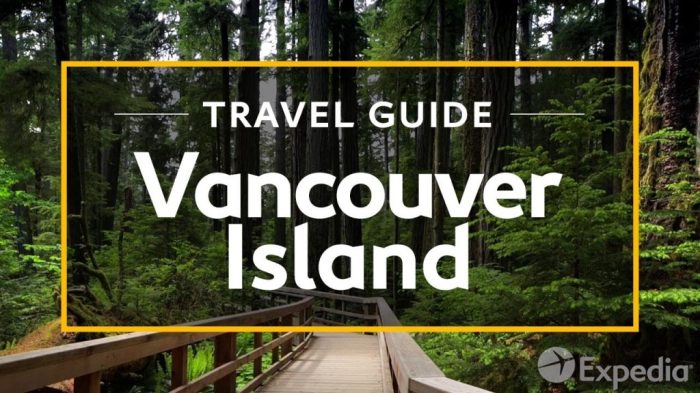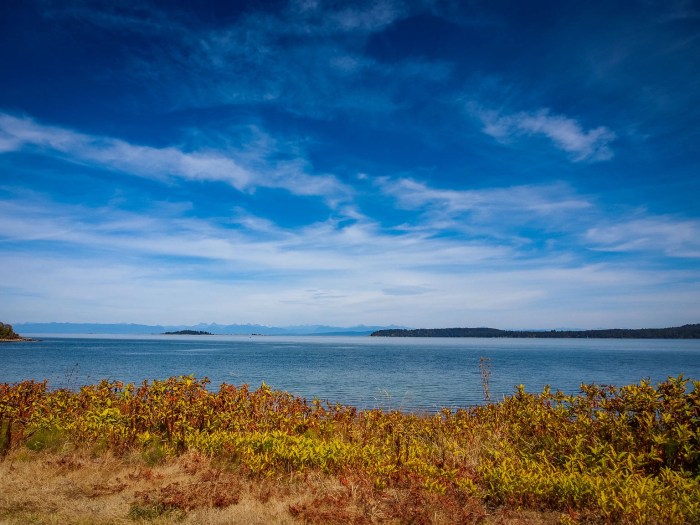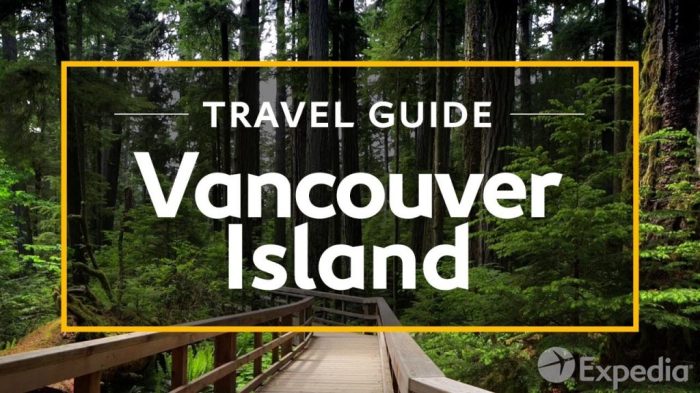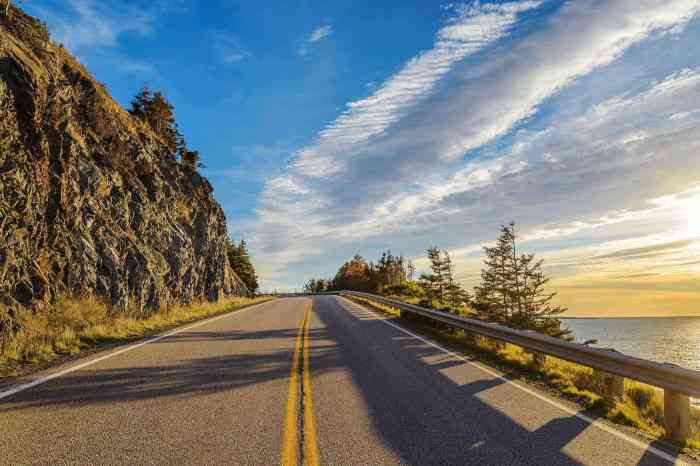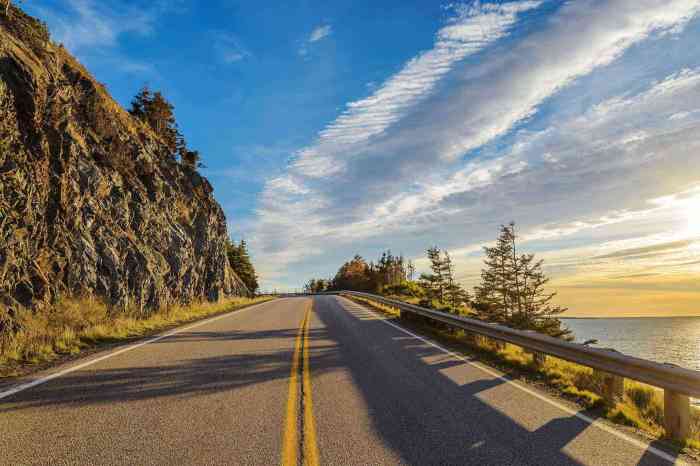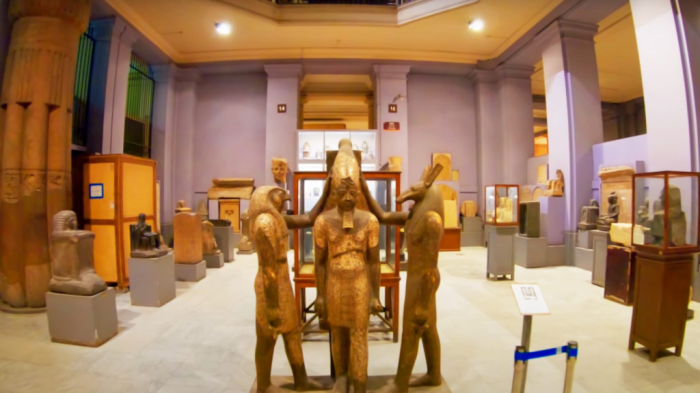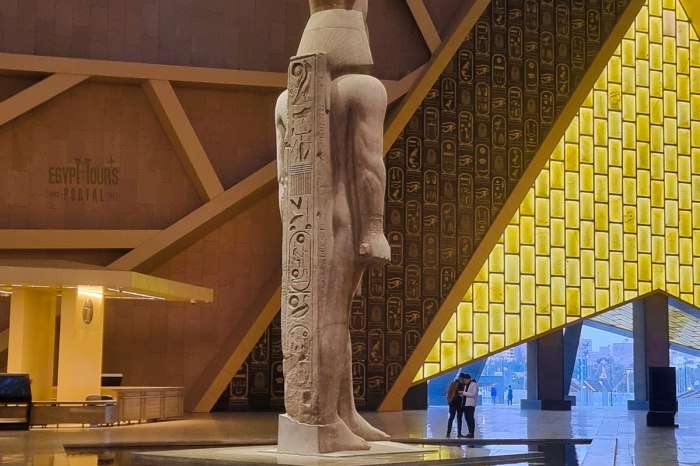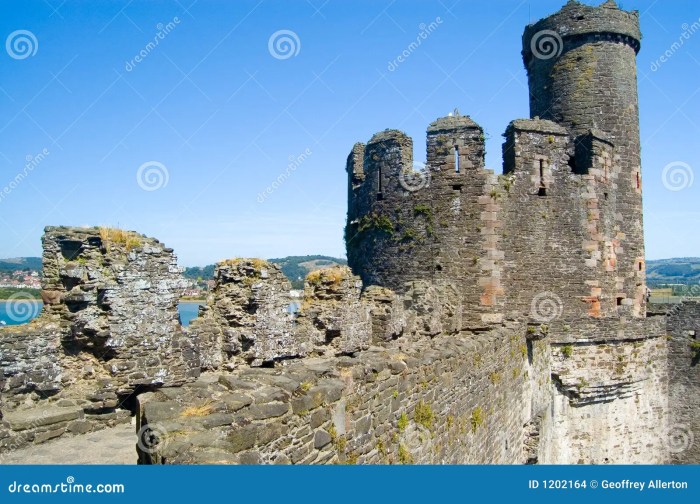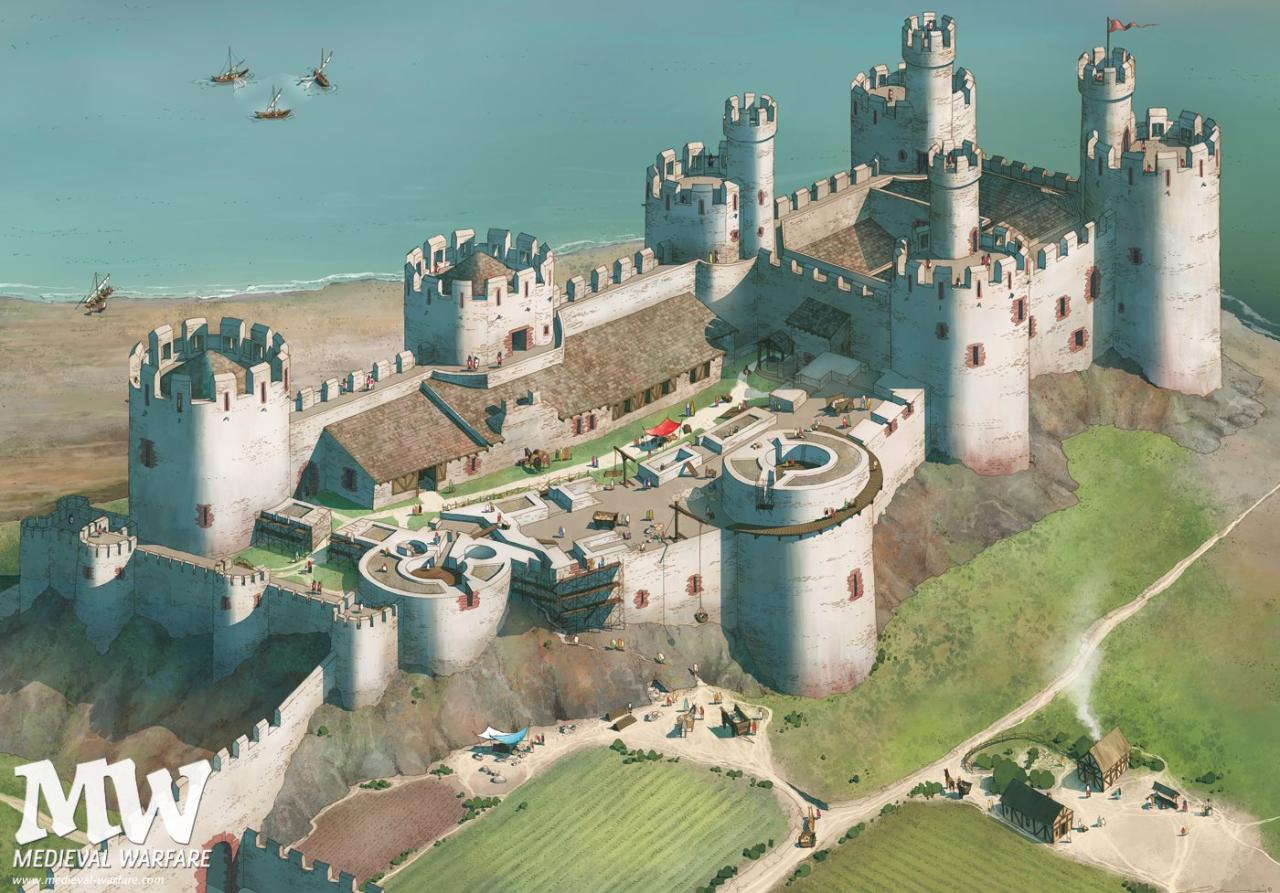Kansas City Missouri Guide: Embark on a captivating journey through the heart of Kansas City, Missouri, a vibrant city brimming with history, culinary delights, and cultural treasures. Discover iconic attractions, explore diverse neighborhoods, and savor the unique atmosphere that makes Kansas City a must-visit destination.
This comprehensive guide provides a detailed overview of Kansas City, from its historical significance and geographical location to its renowned culinary scene, vibrant arts and culture, and exciting activities. Whether you’re a foodie, history buff, or an adventure seeker, this guide will equip you with the knowledge and insights to plan your perfect trip.
Introduction to Kansas City, Missouri

Kansas City, Missouri, a vibrant metropolis nestled in the heart of the American Midwest, boasts a captivating blend of history, culture, and modern dynamism. From its iconic barbecue scene to its renowned jazz heritage, the city pulsates with a unique energy that draws visitors and residents alike. This guide offers a glimpse into the rich tapestry that defines this remarkable city.Kansas City’s history intertwines with the American frontier spirit and the development of the nation’s transportation networks.
Its strategic location on the Missouri River played a pivotal role in its growth as a major trading hub and transportation center. This history continues to shape the city’s character and identity today, reflected in its architecture, cultural institutions, and community spirit.
Key Features and Attractions
Kansas City’s attractions cater to diverse interests. From the architectural splendor of the Country Club Plaza to the historic charm of the 18th and Vine Jazz District, the city offers a rich tapestry of experiences. The vibrant arts scene, encompassing museums, theaters, and galleries, complements the city’s lively culinary scene. World-class sporting venues, such as Kauffman Stadium and Arrowhead Stadium, host major events, further highlighting the city’s dynamic nature.
Historical Significance
Kansas City’s historical significance is deeply rooted in its role as a crucial transportation hub along the Missouri River. This facilitated trade and commerce, contributing significantly to its early development. The city’s connection to the westward expansion of the United States is evident in its early settlements and the historical landmarks that remain. Furthermore, the city’s role in the development of the American West is commemorated through museums and historical sites.
Cultural Identity
Kansas City’s cultural identity is multifaceted and reflects its diverse population and history. The city’s unique blend of influences, ranging from its frontier past to its modern artistic expressions, creates a distinct cultural fabric. The city is particularly renowned for its contributions to jazz music, as well as its vibrant barbecue scene. These aspects of its culture are prominently displayed in festivals, events, and everyday life.
Geographical Location and Surrounding Areas
Kansas City’s strategic location on the Missouri River has shaped its development. It serves as a gateway to the heartland, providing access to numerous surrounding areas. The city’s proximity to the state of Kansas, for example, fosters significant economic and cultural connections. This geographical position also influences its access to natural resources and recreational opportunities. The city’s relationship with its surrounding areas contributes significantly to its regional influence and overall vibrancy.
Planning a trip to Kansas City, Missouri? I’ve got some fantastic local guides to help you navigate the city. While you’re researching, you might also be interested in the upcoming solar eclipse in South America, which promises to be a truly unforgettable experience. solar eclipse south america could be a great add-on to your Kansas City itinerary, especially if you have some extra time to explore beyond the city limits.
Regardless, Kansas City offers plenty of attractions to keep you entertained, from museums to parks to fantastic food!
Must-See Attractions

Kansas City, Missouri, boasts a vibrant tapestry of attractions, reflecting its rich history and diverse cultural influences. From iconic landmarks to unique experiences, this city offers something for every visitor. Exploring these must-see destinations provides a deeper understanding of the city’s character and the stories it holds.
Top 5 Must-See Attractions
Kansas City’s attractions offer a compelling blend of history, art, and entertainment. These five destinations stand out for their unique characteristics, historical significance, and the diverse activities they provide.
| Image Placeholder | Attraction Name | Short Description |
|---|---|---|
| (Imagine a picture of the iconic, Art Deco-style building) | National WWI Museum and Memorial | Dedicated to the First World War, this museum offers an immersive experience, showcasing the history, human impact, and aftermath of the conflict. Interactive exhibits and artifacts provide a powerful understanding of this pivotal historical event. The museum’s architecture itself is a testament to the era, reflecting the artistic trends of the time. |
| (Imagine a picture of the vibrant, bustling street scene) | Country Club Plaza | A sophisticated shopping and dining destination, the Country Club Plaza is a testament to Kansas City’s upscale heritage. Its iconic architecture, upscale boutiques, and diverse restaurants create an atmosphere of refined elegance and leisure. |
| (Imagine a picture of the sprawling, green space with the museum building in the background) | Nelson-Atkins Museum of Art | This renowned museum features an extensive collection of art spanning various periods and cultures. From ancient artifacts to modern masterpieces, the museum provides a comprehensive overview of artistic expression throughout history. The museum’s architectural design blends seamlessly with its surroundings, showcasing the city’s commitment to cultural enrichment. |
| (Imagine a picture of the iconic, vibrant jazz club) | 18th & Vine Jazz District | A historic heart of jazz music, this district showcases the city’s rich musical heritage. Numerous clubs and venues host live performances, paying homage to the iconic jazz scene that flourished in Kansas City. |
| (Imagine a picture of the sprawling, scenic park with fountains and sculptures) | Swope Park | A vast urban park with a diverse range of activities, Swope Park offers a relaxing escape from the city. Picnics, sports, and scenic walks are just a few of the ways to enjoy this green oasis. The park’s design reflects a commitment to urban green spaces, providing a vital connection to nature. |
Historical Significance of the Attractions
The historical context of these attractions provides insight into the evolution of Kansas City. Each location reflects different periods of growth, cultural exchange, and artistic expression, offering a glimpse into the city’s soul. For example, the National WWI Museum and Memorial vividly commemorates a pivotal moment in world history, showcasing the impact of war on individuals and society.
Culinary Scene
Kansas City, Missouri, boasts a vibrant and diverse culinary scene, a testament to its rich history and welcoming atmosphere. From the iconic barbecue joints to the innovative farm-to-table restaurants, there’s something to tantalize every palate. This section explores the city’s culinary landscape, highlighting its renowned barbecue tradition and other noteworthy food options.The city’s food scene reflects its melting pot of influences, with a wide range of restaurants catering to different tastes and preferences.
Beyond the well-known barbecue, Kansas City offers an array of cuisines, reflecting the city’s cosmopolitan nature. The city has become a culinary destination, attracting both locals and tourists seeking a diverse and exciting dining experience.
Looking for a Kansas City, Missouri guide? I’ve got some great tips! Speaking of epic trips, you should check out this account of Andy Cohen and Anderson Cooper’s wild spring break Florida theme park adventure. andy cohen anderson cooper epic spring break florida theme park trip Definitely a fun read, but back to KC, Missouri! There’s tons of amazing food, music, and attractions to explore, so get ready for a memorable visit.
Kansas City’s Renowned BBQ
Kansas City barbecue is a culinary institution, known for its distinctive style. The meat is typically slow-smoked over hickory wood, resulting in a unique flavor profile. The sauce is often tangy and sweet, further enhancing the taste of the meat. The city’s barbecue scene is a cornerstone of its cultural identity.
Other Notable Food Options
Beyond barbecue, Kansas City offers a variety of other dining experiences. The city has a growing number of farm-to-table restaurants, highlighting the freshest local ingredients. International cuisine is also represented, providing a diverse and global perspective on the city’s food scene. This diverse range caters to a wide range of preferences and dietary needs.
Local Eateries and Their Characteristics
Many local eateries in Kansas City are known for their unique characteristics. Some restaurants specialize in classic American comfort food, while others offer innovative takes on familiar dishes. The city’s diverse culinary landscape has fostered a thriving restaurant scene, featuring a variety of experiences.
Comparison of Different Restaurant Types
Kansas City’s restaurant scene offers a mix of fine dining establishments, casual eateries, and everything in between. The city’s diverse range of restaurants reflects the multifaceted nature of its population and culinary tastes. The choice of restaurant reflects a personal preference.
Popular Local Restaurants
| Restaurant Name | Cuisine Type | Description |
|---|---|---|
| Joe’s Kansas City Bar-B-Que | Barbecue | A legendary barbecue joint, known for its classic Kansas City-style barbecue. |
| The Spaniard | Spanish | A highly-rated Spanish restaurant with a sophisticated atmosphere and delicious tapas. |
| Pappy & Harriet’s | American | A popular spot for delicious comfort food and a lively atmosphere. |
| The Country Club | American | A sophisticated American restaurant with an elegant ambiance. |
| The Eastern Standard | American | A modern American restaurant with a focus on fresh, seasonal ingredients. |
Arts and Culture
Kansas City, Missouri, boasts a vibrant and diverse arts and culture scene that significantly shapes its identity. From world-class museums to intimate theaters, the city offers a plethora of experiences for art enthusiasts and casual visitors alike. The arts are deeply intertwined with the city’s history and its evolving character, contributing to its unique appeal.Kansas City’s artistic landscape reflects its rich past and forward-thinking present.
Museums showcase everything from regional history to contemporary art, while performing arts venues provide opportunities to experience world-class performances. The city’s investment in arts and culture fosters a creative environment, attracting both residents and tourists, further enriching the cultural fabric of the area.
Museums
Kansas City is home to a collection of notable museums, each with its unique focus and contributions to the city’s cultural tapestry. From showcasing historical artifacts to contemporary masterpieces, these institutions provide enriching experiences for visitors of all ages. The presence of these museums underscores the city’s commitment to preserving and promoting its cultural heritage.
Theaters and Performing Arts Venues
The city’s performing arts scene is a vital component of its cultural identity, providing a stage for a diverse range of performances. From Broadway-caliber productions to local plays, the theaters in Kansas City offer a variety of entertainment options, showcasing the talent and creativity of the region. The presence of these venues demonstrates the city’s appreciation for the performing arts and its commitment to fostering artistic expression.
Arts and Culture Destinations
| Venue Name | Type | Description |
|---|---|---|
| Nelson-Atkins Museum of Art | Art Museum | Renowned for its extensive collection of art spanning various periods and styles, from ancient to contemporary. The museum’s architecture is also noteworthy. |
| Kemper Museum of Contemporary Art | Art Museum | Focuses on contemporary and modern art, offering a dynamic and evolving perspective on artistic expression. The museum hosts exhibitions and events reflecting the contemporary art scene. |
| The Kauffman Center for the Performing Arts | Performing Arts Venue | A state-of-the-art performing arts center housing multiple venues for diverse performances, including Broadway shows, concerts, and more. The facility is a key contributor to the city’s vibrant arts and culture scene. |
| The Lyric Theatre | Theater | A historic theater hosting various performances, including Broadway shows and local productions. Its rich history adds to the city’s cultural tapestry. |
| The Starlight Theatre | Outdoor Theater | An outdoor theater that provides a unique setting for performances, especially during summer months. This venue adds to the city’s diverse offerings and aligns with its cultural diversity. |
Activities and Experiences
Kansas City, Missouri, offers a vibrant tapestry of activities for every interest. From exploring its stunning parks to experiencing the electrifying energy of live music, there’s something for everyone. This vibrant city seamlessly blends history, culture, and entertainment, creating a unique and unforgettable experience for visitors.Kansas City’s diverse offerings cater to a wide range of interests, ensuring that every visitor can find something engaging and memorable.
Whether you’re an outdoor enthusiast, a foodie, or a lover of the arts, you’ll discover a wealth of experiences waiting to be explored.
Outdoor Recreation
Kansas City boasts a network of beautiful parks and trails perfect for outdoor adventures. These spaces provide opportunities for picnicking, hiking, biking, and simply relaxing in nature. The city’s commitment to preserving these green spaces enriches the quality of life for residents and visitors alike.
- Swope Park: This expansive park system features a variety of trails, picnic areas, and even a golf course, offering something for everyone. It’s a great place to spend a day in nature, whether you’re a seasoned hiker or simply looking for a relaxing stroll.
- The Country Club Plaza: Known for its upscale shops and restaurants, this area also features beautiful landscaping and walking paths, providing a serene escape within the city center.
- The Blue River Trail: Enjoy a scenic bike ride or walk along the picturesque Blue River Trail, offering stunning views and access to various points of interest.
Sporting Events, Kansas city missouri guide
Kansas City is a passionate sports town, and experiencing a sporting event is a must-do. The city is home to several professional teams, offering opportunities to cheer on local heroes and witness exciting competition.
- Sporting events such as Royals baseball games, Chiefs football games, and Sporting Kansas City soccer matches provide a vibrant atmosphere and the thrill of live competition.
- Check the schedules of local teams for dates and ticket availability. Many events sell out quickly, so booking tickets in advance is strongly recommended.
Local Events and Festivals
Kansas City hosts a diverse calendar of events throughout the year, celebrating various cultures and traditions. These celebrations offer a glimpse into the city’s rich heritage and provide opportunities to connect with the local community.
- The Kansas City Folk Music Festival: This annual event showcases the talents of local and regional folk musicians, offering a unique blend of music and culture. It’s a great opportunity to discover new musical styles and enjoy the vibrant atmosphere.
- The Country Club Plaza’s annual events and festivals: Throughout the year, the Country Club Plaza hosts a variety of events, from art shows to food festivals. These events are a wonderful way to experience the energy and excitement of the city.
- Other events include the Kansas City Wine Festival, the Summer Arts Festival, and many more. Checking the city’s official event calendar provides a comprehensive overview of upcoming celebrations.
Day Trips and Weekend Getaways
Planning a day trip or weekend getaway in the Kansas City area is easy with a variety of options to choose from. These destinations are easily accessible and provide a chance to explore nearby attractions or historical sites.
- Lake Tapawingo: Enjoy a peaceful escape to this picturesque lake, offering opportunities for boating, fishing, and swimming. This serene destination is a great option for a relaxing weekend getaway.
- The historic Route 66 attractions in the area: Exploring the legacy of Route 66 is a popular choice for travelers. Many museums, diners, and attractions along the route offer a glimpse into the region’s rich history.
Nightlife
Kansas City’s nightlife scene is diverse and exciting, ranging from lively bars to intimate live music venues. The city’s music scene is renowned, and there are numerous venues to discover.
- The 18th and Vine Jazz District: Known as the birthplace of jazz, this district features a variety of live music venues and bars, offering an authentic experience of the city’s musical heritage.
- The Crossroads Arts District: This district is known for its eclectic mix of bars, restaurants, and live music venues, offering a vibrant nightlife experience with a creative flair.
Activity Planning Table
| Activity Type | Location | Description |
|---|---|---|
| Outdoor Recreation | Swope Park | Explore trails, enjoy picnics, or relax in nature. |
| Sporting Events | Arrowhead Stadium | Experience the thrill of a Chiefs football game. |
| Festivals | Various locations | Attend local festivals celebrating music, art, and culture. |
| Day Trip | Lake Tapawingo | Enjoy boating, fishing, and swimming at this beautiful lake. |
| Nightlife | 18th and Vine Jazz District | Experience live jazz music and enjoy the vibrant atmosphere. |
Neighborhoods: Kansas City Missouri Guide
Kansas City, Missouri boasts a vibrant tapestry of neighborhoods, each with its own unique character, history, and charm. From the historic heart of the city to the trendy up-and-coming areas, exploring these neighborhoods is an essential part of experiencing the true spirit of Kansas City. Each neighborhood offers a distinct flavor, whether it’s the lively energy of a bustling commercial district, the quiet elegance of a historic residential area, or the artistic flair of a creative hub.Delving into the diverse neighborhoods of Kansas City unveils a rich tapestry of architectural styles, cultural influences, and local stories.
Looking for a Kansas City Missouri guide? I’ve got some amazing recommendations for exploring the city! While you’re planning your trip, checking out the best resorts in the south could be a great way to round out your vacation. Best resorts in the south often offer unique experiences, and Kansas City’s got its own charm, with fantastic food and entertainment.
Hopefully, this helps you plan a memorable trip to Kansas City!
These neighborhoods are more than just geographical locations; they are living communities with distinct identities that shape the city’s vibrant personality.
Neighborhoods Overview
Kansas City’s neighborhoods offer a diverse range of experiences, from historic charm to modern amenities. Understanding the unique characteristics of each neighborhood allows visitors to fully appreciate the city’s vibrant personality.
| Neighborhood Name | Brief Description | More Information |
|---|---|---|
| Downtown | The heart of Kansas City, brimming with skyscrapers, museums, and vibrant nightlife. A mix of historic architecture and modern developments, it offers a central location for exploring the city. | [Link to Downtown KC Information] |
| Midtown | A historic neighborhood with a mix of residential streets, unique boutiques, and restaurants. Known for its vibrant art scene and a laid-back atmosphere. | [Link to Midtown KC Information] |
| The Crossroads | A trendy area with a thriving culinary scene, diverse shops, and live music venues. Known for its unique mix of architectural styles and independent businesses. | [Link to Crossroads KC Information] |
| Country Club Plaza | A luxurious shopping and dining district, known for its upscale boutiques, art galleries, and fine dining restaurants. A sophisticated atmosphere with a focus on high-end retail and entertainment. | [Link to Country Club Plaza KC Information] |
| West Bottoms | A revitalized area with a mix of industrial and residential spaces. Known for its trendy restaurants, breweries, and public art installations. An area undergoing significant transformation. | [Link to West Bottoms KC Information] |
| Jackson County | A residential area with a mix of homes, parks, and community centers. Known for its quiet atmosphere and strong sense of community. | [Link to Jackson County KC Information] |
| Grandview | A residential area with a variety of housing options, including single-family homes, townhouses, and apartments. Known for its family-friendly atmosphere and proximity to various amenities. | [Link to Grandview KC Information] |
| Swope Park | A residential area with access to a beautiful park and various amenities. Known for its relaxed atmosphere and close proximity to Swope Park, a major local attraction. | [Link to Swope Park KC Information] |
Shopping and Dining Experiences
Each neighborhood offers a unique blend of shopping and dining experiences. From high-end boutiques to local artisan shops, and from casual cafes to fine-dining establishments, the diverse culinary scene reflects the eclectic nature of each neighborhood.
- Downtown: High-rise office buildings, upscale shops, and a wide range of dining options. Expect to find a blend of national chains and local favorites, offering a diverse range of tastes.
- Midtown: A mix of trendy boutiques, vintage stores, and art galleries. Expect to find a greater concentration of independent businesses and local artists’ work.
- The Crossroads: A hub for craft breweries, unique restaurants, and live music venues. Expect a mix of casual dining and more sophisticated eateries.
- Country Club Plaza: Known for its high-end shopping and dining options. Expect luxury brands and upscale restaurants.
Transportation and Getting Around
Kansas City, Missouri, offers a variety of transportation options, making it easy to explore the city’s diverse neighborhoods, attractions, and culinary scene. Whether you’re a local or a visitor, understanding the different modes of transport can significantly enhance your experience. From navigating the bustling downtown core to reaching the vibrant suburbs, knowing the best method for each journey is key.Navigating Kansas City’s spread-out layout is best approached with a combination of transportation methods.
Public transit provides a cost-effective and eco-friendly option for many trips, while ride-sharing and taxis offer flexibility and convenience for specific needs. Choosing the right method depends on your destination, budget, and personal preferences.
Public Transportation Options
Kansas City’s public transportation system is comprised primarily of buses and a light rail system, offering a comprehensive network for navigating the city. This system is vital for those looking for an affordable and environmentally conscious way to travel. The system’s coverage extends throughout the city, allowing convenient access to numerous neighborhoods, attractions, and businesses.
- Buses: The bus system provides extensive coverage, reaching many parts of the city, including areas that light rail doesn’t serve. Pros include affordability and accessibility to a wide range of destinations. Cons include potential delays and reliance on schedules. The system is generally efficient during peak hours, but may experience delays during non-peak times or inclement weather.
Bus routes are well-documented and accessible online, allowing for efficient planning.
- Light Rail: The light rail system offers a more direct route through the downtown and surrounding areas. Pros include speed and efficiency for those traveling between specific points. Cons include limited coverage compared to buses, and stations may not be located in every neighborhood.
Ride-Sharing and Taxi Services
Ride-sharing services like Uber and Lyft, and traditional taxi services, provide flexibility and convenience for trips that may not be well-suited to public transportation. These services offer immediate transport, allowing for spontaneity and avoiding scheduling constraints.
- Ride-sharing (Uber/Lyft): Ride-sharing services are a popular choice for their convenience and cost-effectiveness, especially for shorter distances. Pros include ease of use, real-time tracking, and often competitive pricing. Cons include potential fluctuations in pricing, particularly during peak demand periods.
- Taxis: Traditional taxis offer a familiar alternative, with drivers often having in-depth knowledge of the city’s layout. Pros include direct service and immediate availability. Cons include potentially higher costs compared to ride-sharing services, and a lack of real-time tracking options.
Choosing the Best Method
The optimal method of transportation depends greatly on the specifics of your trip. For covering broad areas or traveling to multiple locations, buses are often the most cost-effective option. For quicker, more direct travel within certain areas, the light rail system may be more efficient. For specific needs, ride-sharing or taxis provide a more flexible solution.
| Transportation Method | Pros | Cons | Best Use Cases |
|---|---|---|---|
| Buses | Affordable, Extensive Coverage | Potential Delays, Reliance on Schedules | Long-distance travel, exploring multiple areas |
| Light Rail | Speed, Efficiency, Direct Routes | Limited Coverage, Fewer Stops | Traveling between specific points in downtown or nearby areas |
| Ride-Sharing | Convenience, Real-Time Tracking, Competitive Pricing | Potential Price Fluctuations, No Guaranteed Availability | Short-distance trips, flexibility, spontaneity |
| Taxis | Direct Service, Immediate Availability, Local Knowledge | Potentially Higher Costs, Lack of Real-Time Tracking | Pre-arranged trips, special needs, or when speed is crucial |
Accommodation Options
Kansas City, Missouri offers a wide array of accommodation options to suit every traveler’s needs and budget. From luxurious hotels to cozy vacation rentals, you’ll find a place to rest and recharge after exploring the city’s vibrant attractions. Understanding the various options and their proximity to key areas will help you choose the best fit for your trip.Choosing the right lodging is crucial for a smooth and enjoyable experience.
Factors like location, amenities, and price point all play a role in finding the perfect place to stay. Consider whether you’re traveling with family, a partner, or solo, as these factors can significantly influence your accommodation selection.
Hotel Options
Kansas City boasts a variety of hotels, catering to diverse preferences. Luxury hotels often provide premium amenities like spa services, fine dining, and exceptional room service. Mid-range hotels offer a comfortable stay with essential conveniences. Budget-friendly hotels are perfect for travelers seeking a clean and affordable place to rest. Each hotel type presents distinct advantages, and careful consideration of your priorities will lead to a better choice.
Vacation Rentals
Vacation rentals, including apartments, houses, and condos, provide more space and often a home-like atmosphere. These accommodations are ideal for families or groups looking for a more flexible and independent experience. Vacation rentals often feature fully equipped kitchens, laundry facilities, and ample living space. The convenience of these amenities can significantly impact your travel experience, making them a great choice for longer stays.
Comparison of Accommodation Types
| Accommodation Type | Price Range | Description ||—|—|—|| Luxury Hotels | $$$$ | Exquisite accommodations with premium amenities, fine dining, and exceptional service. Examples include the Four Seasons Hotel or The Crown Center. || Mid-Range Hotels | $$ | Comfortable rooms with standard amenities. Examples include Courtyard by Marriott or Hilton Garden Inn. || Budget-Friendly Hotels | $ | Clean and affordable options with basic necessities.
Examples include Motel 6 or Super 8. || Vacation Rentals | $$$-$$$$ | Apartments, houses, or condos offering more space and home-like features. These rentals are suitable for families and groups. Prices vary depending on the size and location. |
Best Choices for Different Travelers
For families, spacious vacation rentals with multiple bedrooms and kitchens are ideal. Couples often appreciate the intimate setting of boutique hotels or charming bed and breakfasts. Solo travelers might favor budget-friendly hotels in central locations, providing easy access to attractions.
Location Considerations
The location of your accommodation plays a vital role in your experience. Hotels and rentals near the heart of the city offer easy access to popular attractions. Accommodations in more residential areas provide a quieter environment. Consider the attractions and neighborhoods you want to explore when choosing your lodging. The proximity to attractions directly affects your travel time and convenience.
Illustrative Images and Visual Aids
Kansas City, Missouri, boasts a vibrant tapestry of experiences, from its historic architecture to its contemporary culinary scene. Illustrative images are crucial for conveying the city’s unique character and attracting visitors. These visual aids will transport viewers to the heart of Kansas City, painting a vivid picture of its distinct neighborhoods, iconic landmarks, and vibrant atmosphere.
Wide-Shot of the City
This image would capture the sprawling cityscape, showcasing the confluence of modern skyscrapers and historic buildings. The image should ideally highlight the Missouri River, reflecting the skyline, and hinting at the city’s geographical setting. The scene should convey a sense of urban dynamism, with subtle nods to the city’s industrial past. A golden hour shot, with warm hues and soft shadows, would evoke a feeling of tranquility and opportunity.
The mood would be one of possibility and exploration, inviting viewers to discover the city’s hidden gems.
Close-Up of a Local Restaurant
This image would focus on a bustling local restaurant, capturing the warmth and energy of a busy dining experience. The image should highlight the ambiance, featuring warm lighting, the aroma of delicious food, and the joyful interactions between diners. The details of the restaurant’s interior design, the color palette, and the textures of the food should be clear, enticing the viewer to experience the local culinary scene.
The mood should be inviting and celebratory, emphasizing the city’s passionate culinary spirit.
Park Scene
The image should portray a vibrant park scene, perhaps a city park like Swope Park, showcasing the green spaces and lively atmosphere. The scene could include people enjoying the outdoors, picnicking, playing games, or simply relaxing. The focus should be on the natural beauty of the park, juxtaposed with the urban backdrop. The image should highlight the contrast between the urban environment and the tranquility of nature.
The mood would be relaxed, peaceful, and enjoyable, inviting viewers to experience the city’s green spaces.
Street Scene
This image would capture a bustling street scene, perhaps in the Crossroads Arts District, showcasing the vibrant street life. The image should convey the lively energy of the area, with pedestrians, street performers, or shops displaying unique local products. The image should highlight the architectural style of the buildings, and the color palette of the area, reflecting the distinct character of the neighborhood.
The mood should be energetic and inspiring, hinting at the city’s unique character and vibrant culture.
Cultural Landmark
The image would depict a significant cultural landmark, such as the Nelson-Atkins Museum of Art, with its striking architecture and surrounding landscaping. The image should highlight the building’s unique design and its historical significance. The scene should capture the grandeur and sophistication of the landmark, with attention to the intricate details and the surrounding atmosphere. The mood would be one of reverence and appreciation, conveying the cultural richness and historical depth of the city.
Ending Remarks
From iconic attractions to hidden gems, Kansas City, Missouri offers a diverse and unforgettable experience. This guide provides a comprehensive look at the city’s history, culture, and offerings, making it easy to plan your trip. Explore the unique neighborhoods, savor the delicious food, and immerse yourself in the arts and culture. Kansas City awaits!




